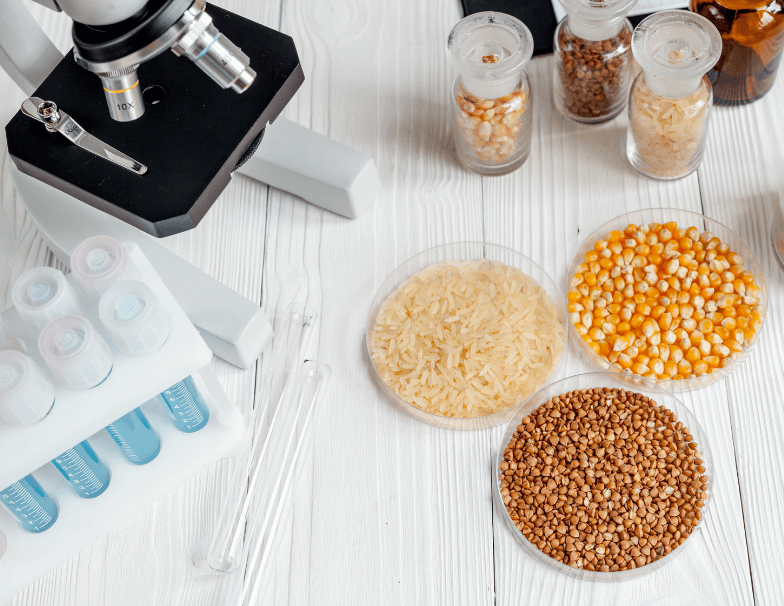The nutritional data obtained in a food laboratory on the composition of food is of fundamental importance in sectors such as nutrition, the food industry, food regulation, dietetics, health, biodiversity, plant breeding and trade, among others.
Thanks to food analysis we can obtain the nutritional value tables that are used in labelling, research or food regulations.
Do you want to know more about it? In this article we explain everything you need to know about laboratory food analysis.
What is nutritional food analysis?
Food analysis is a process used to determine the nutritional content of food. It is a vital part of analytical chemistry, providing information on chemical composition, processing, quality control and contamination to prevent food poisoning.
It also ensures compliance with food regulations, which is essential in the food industry.
Laboratory analysis is essential in industry, as it not only ensures reliable quality control of a food after processing, but is able to measure the actual levels of nutrients in the prepared food. This provides a high level of analytical accuracy. In fact, it takes into account changes in nutritional value that occur due to cooking and food processing.
For example, calories tend to increase or decrease during the cooking process depending on the method used. In this sense, fats added during frying increase the caloric content, whereas in roasting they decrease.
How to perform a food analysis in a laboratory
For this method, food companies send food samples to laboratories for physico-chemical analysis or to solve problems and find solutions, as was the case of the quality control by microscopy in food that we carried out in Infinitia.
The food laboratory, using scientific methods and equipment, analyses the food sample in search of the different elements that make up the nutritional information and issues a detailed report.
Steps of food analysis
1. Sample collection
Sample collection refers to the extraction of a representative sample for analysis and testing. Sample collection usually consists of three components: sampling, sampling and sample preparation.
Sampling containers should be made of hard glass or polyethylene, according to the inspection items. In addition, different methods must be used for the collection of different types of samples. Collecting a liquid sample is not the same as collecting a solid sample.
2. Sample treatment
The sample preparation step is one of the most critical in the analytical process.
Samples usually contain certain impurities that have to be removed, as they interfere with the analysis and may affect the results. Therefore, prior to analysis and inspection, they must be processed using methods such as:
- Solvent extraction
- Distillation
- Decomposition of organic matter by dry calcination
- Salting
- Chemical separation
- Masking
- Clarification
- Bleaching
- Chromatography
- Concentration
3. Analysis and detection
There are a large number of methods that can be used to carry out the analysis and detection of samples. However, when selecting the method to be used, the nature of the sample, the content of the analysed components and the interfering components must be taken into account.
4. Recording and processing of analytical results
The results of the analysis should be accurately recorded and processed according to the prescribed methods to obtain all necessary information, e.g. nutritional food table if applicable.
What is the purpose of nutritional analysis of foodstuffs?
The information we obtain from food analysis in laboratories is crucial, ranging from the composition and nutritional value of foods or preparations, the identification of allergens and microbiological contaminants, to the generation of nutritional information labels or ingredient declarations. It is also used to discover bioactive compounds in foods, calculate shelf life, prevent food poisoning and ensure regulatory compliance. These are all essential factors in the food industry.
In this aspect, the most common data that nutritional analyses in laboratories can report are values such as the amount of protein, sodium, carbohydrates, fibre, sugar and fat profiles, vitamins, etc. And even more specific ones such as tests for preservatives or food shelf life.
At INFINITIA we have the most advanced laboratories to offer you the most detailed analysis and the best solution. Contact our team of professionals and tell us about your case.





